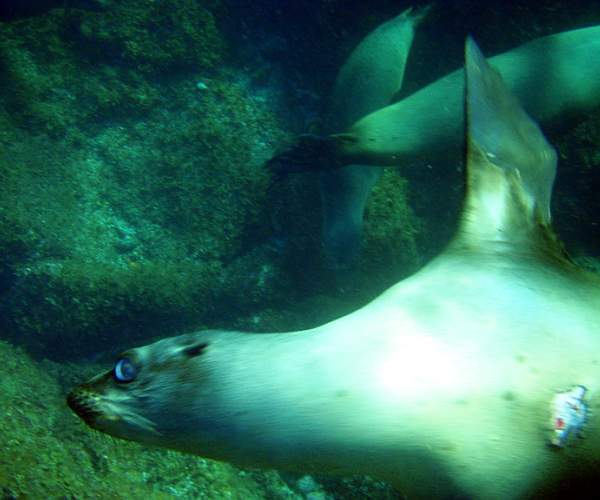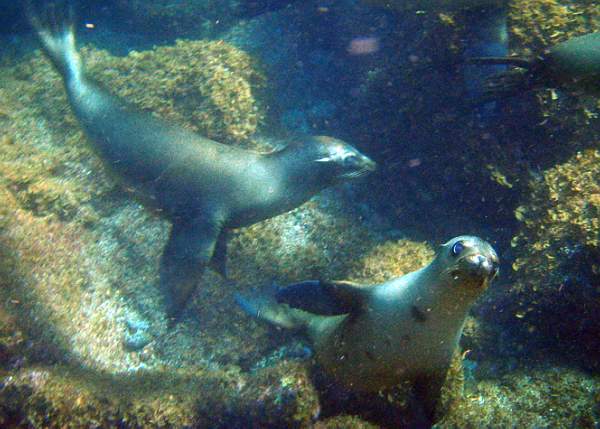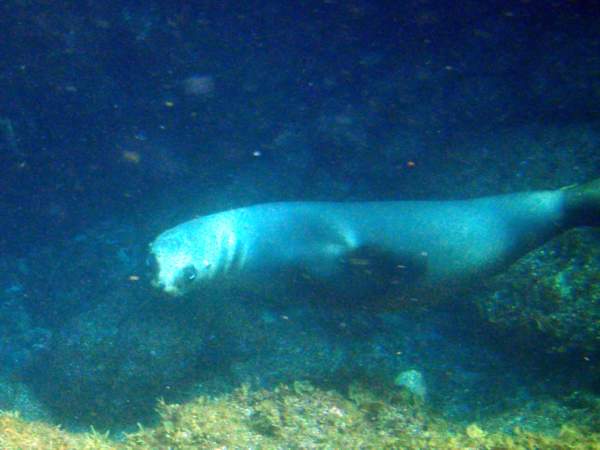Published in the Ocean Watch column, Honolulu Star-Advertiser © Susan Scott
December 7, 2009
SEA OF CORTEZ, Mexico » This is my last week of a two-month voyage through the Sea of Cortez’s Midriff Islands. I enjoyed every day. Sailing with friends was fun, my sailboat systems worked and sperm whales, manta rays, fish and coyotes appeared in all their glory.
When I think back on this autumn cruise, though, one event stands out from all others in sound, color and thrills: my hourlong swim with about 100 California sea lions.
It happened when Craig and I sailed to Rasa Island, about a mile long and a half-mile wide, where 99 percent of Heerman’s gulls and 95 percent of elegant terns nest. During breeding season this island hosts hundreds of thousands of these stunning, endemic seabirds, all raising chicks.
Since breeding season starts in March, no one was home on the guano-white island, but I was still happy to see the famous site.
After circumnavigating Rasa, we sailed a mile north to Rasa Rock, a tiny, 75-foot-high islet where the snorkeling was reportedly good. Those reports, however, didn’t mention that California sea lions owned the place.
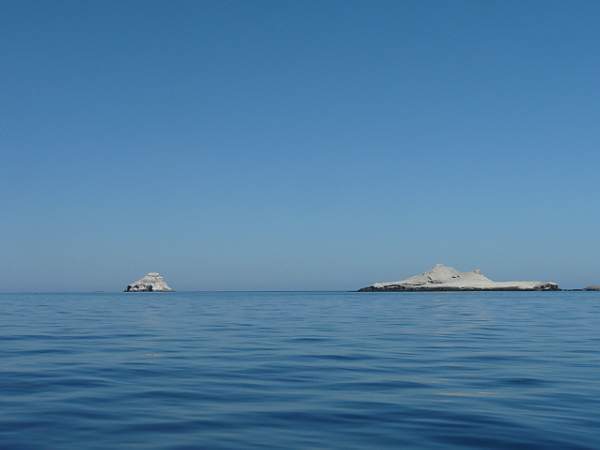
Before we saw them, we heard them as they called loudly to one another in honks, wails and bleats. When we did see them, they seemed to be everywhere on the rock, some even perched on its high peaks. The animals’ golden coats looked like teddy bear fur in the morning sun, and we eased the boat close for a better look. With that, the sea lions came alive, flopping over rocks and across gaps with their big front flippers as they rushed to the water.
We felt awful for frightening the resting animals, but then we saw they were all swimming toward the boat. Soon their sleek, brown heads bobbed in the water all around us.
The California sea lion, native to coastal waters from Canada to Mexico, is the species we see in marine parks jumping through hoops and balancing balls on their snouts. And indeed, our sea lion visitors looked as if they were waiting for us to throw a ball.
Adult males weigh from 440 to 860 pounds and during breeding season can get your adrenaline flowing when they defend their territory with roaring charges. One dive guide author writes, “The bulls will come at divers head on, occasionally baring teeth and bellowing a loud bark. Like all warnings, these should be respected and you should back off.”
That I would definitely do, after my heart started beating again.
I was glad it wasn’t breeding season because the bulls were absent, leaving only females, weighing from 100 to 250 pounds, and their smaller pups, some not yet weaned. Agreeing these animals had friendly intentions, Craig and I jumped in the water. And the games began.
The main entertainment involved us swimming around while the sea lions dive-bombed us. In this, they swim straight toward you at breakneck speed, and at the last second practically fold their bodies in half, veering away in a rush of bubbles.
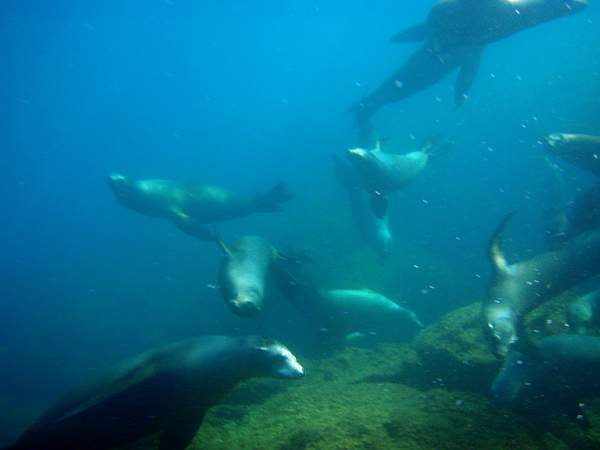
Their other game was hovering face to face, making eye contact and then tearing away in a twist.
We played until we got tired and the sea lions got bored.
I’m happy to come home now, but next time I go sailing, I know where I’ll go and when. In the meantime, I’ll be reading up on Heerman’s gulls, elegant terns and testosterone-loaded sea lions.
